Physical Address
304 North Cardinal St.
Dorchester Center, MA 02124
Physical Address
304 North Cardinal St.
Dorchester Center, MA 02124
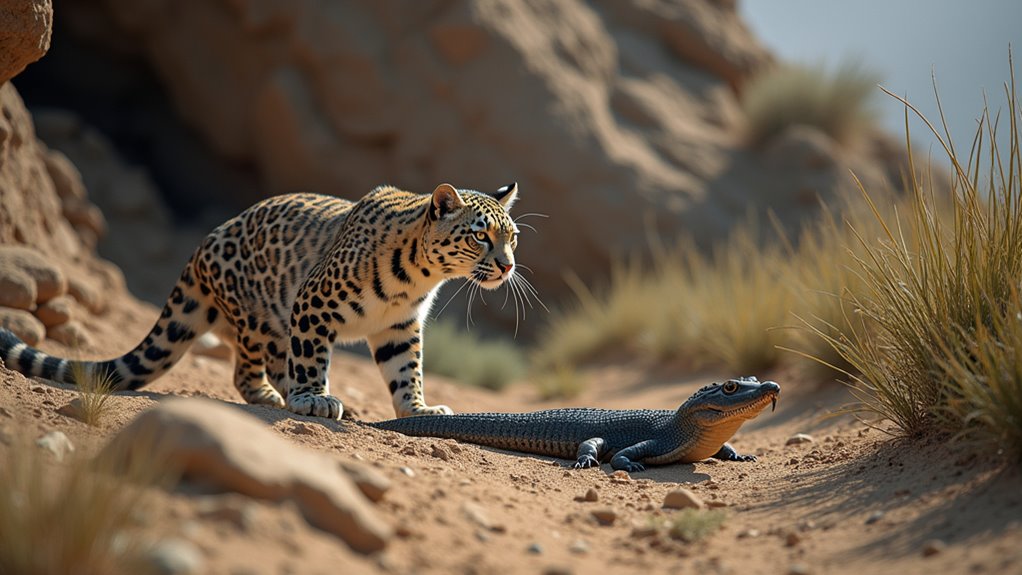
In Pakistan's diverse wilderness, deadly creatures from venomous vipers to lurking crocodiles await unsuspecting travelers who venture too close.
Pakistan hosts several dangerous animals you should avoid. The saw-scaled viper, Indian cobra, and common krait deliver potentially lethal venomous bites. Leopards and wolves pose threats in wilderness areas, especially when threatened. Deathstalker scorpions lurk in eastern deserts, while stonefish hide along coastal waters. Mugger crocodiles patrol freshwater bodies, and cone snails present marine dangers. Understanding these creatures’ habitats and behaviors can notably improve your safety during outdoor adventures.
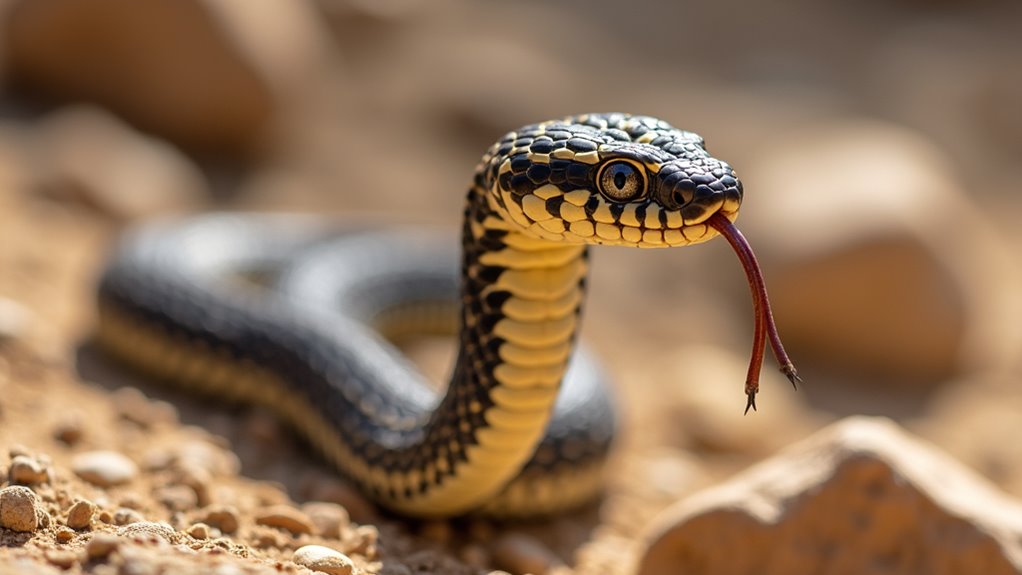
While Pakistan boasts incredible biodiversity across its varied landscapes, it’s also home to some truly dangerous creatures that deserve your respect and caution. From venomous snakes like the Indian cobra and kraits to predatory mammals such as leopards and wolves, the country harbors wildlife that can pose serious threats to humans.
The Indian cobra, recognizable by its distinctive hood with false eyes, delivers deadly venom that can be fatal if left untreated.
The saw-scaled viper and other vipers account for numerous snake bites annually.
In marine environments, you’ll need to watch for deadly cone snails and toxic pufferfish.
Desert regions house the lethal Deathstalker and Fattail scorpions, which deliver painful, potentially fatal stings.
When exploring Pakistan’s wilderness, always maintain a safe distance from these animals. Most encounters become dangerous only when the creatures feel threatened or their habitats are disturbed.
Among Pakistan’s most dangerous creatures, the saw-scaled viper (Echis carinatus) is prominent as a particularly lethal threat. This venomous snake inhabits most of Pakistan except the northern mountains, thriving in arid landscapes from sandy deserts to urban gardens.
You’ll recognize this nocturnal predator by the distinctive rasping sound it makes when threatened, rubbing its saw-like scales together. Unlike many desert vipers, it doesn’t bury itself but ambushes prey from rock or shrub shelters.
Though reluctant to bite unless provoked, its strikes are fast and precise. The venom causes serious envenomation requiring immediate medical attention. Its venom contains powerful toxins that lead to systemic hemorrhages in victims without proper treatment.
If you’re exploring Pakistan’s desert regions or rural areas, remain vigilant—this silent killer adapts well to human environments, making unexpected encounters possible.
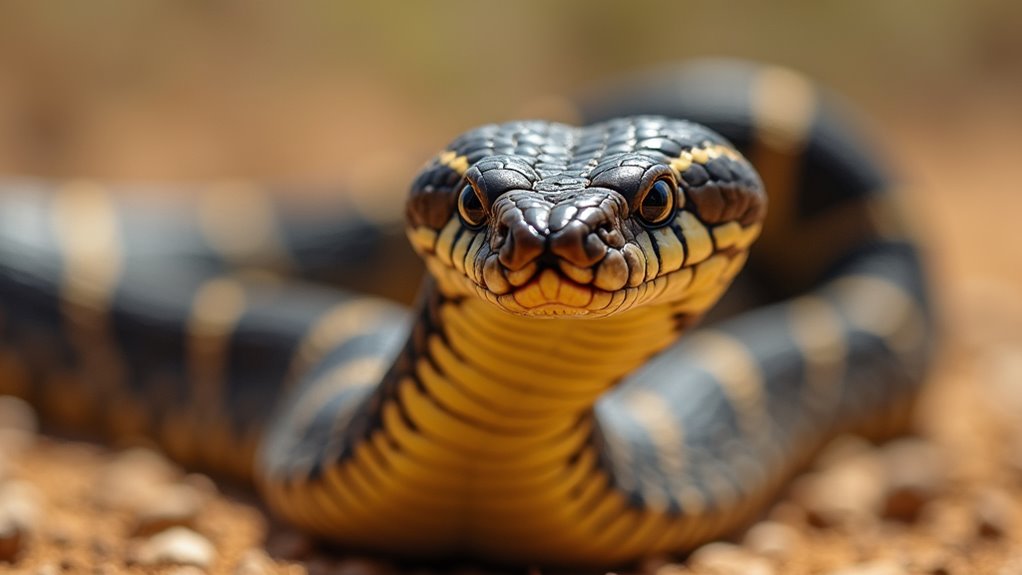
The Indian cobra (Naja naja) stands as another formidable serpent in Pakistan’s wilderness, instantly recognizable by its iconic hood display when threatened. Primarily found in Pakistan’s North-West Frontier province, these snakes grow between 1-1.5 meters, with some reaching 2.2 meters.
You’ll find these adaptable reptiles near water sources in plains, jungles, and even urban areas. They make homes in embankments, tree hollows, and abandoned mammal dens.
Unlike most serpents, female cobras guard their 12-20 eggs throughout the 50-day incubation period. What’s most remarkable is that hatchlings emerge fully equipped with defensive capabilities, able to rear up and strike immediately after breaking through their shells.
Though not typically aggressive unless provoked, their venom delivery system can cause serious injury or death. Despite threats from harvesting for venom and meat, their population remains stable, earning them a “Least Concern” conservation status.
Pakistan’s most lethal serpent, the Common Krait (Bungarus caeruleus), earns its reputation as a silent killer through its deadly combination of potent venom and secretive habits.
You’ll find this nocturnal predator throughout Pakistan, particularly in Sindh and Punjab regions. What makes kraits especially dangerous is their painless bite—you mightn’t even realize you’ve been bitten until paralysis sets in.
They commonly enter homes during monsoon season and bite people sleeping on the floor. Recognizable by their bluish-black body with approximately 40 white crossbars, these snakes are most aggressive when disturbed at night. If you’re in rural areas, be vigilant near termite mounds, rodent burrows, and water sources where kraits hunt.
Despite their deadly nature, these snakes actually benefit agricultural communities by controlling rodent populations. Still, their neurotoxic venom causes respiratory failure without prompt treatment, making them one of Pakistan’s deadliest animals.
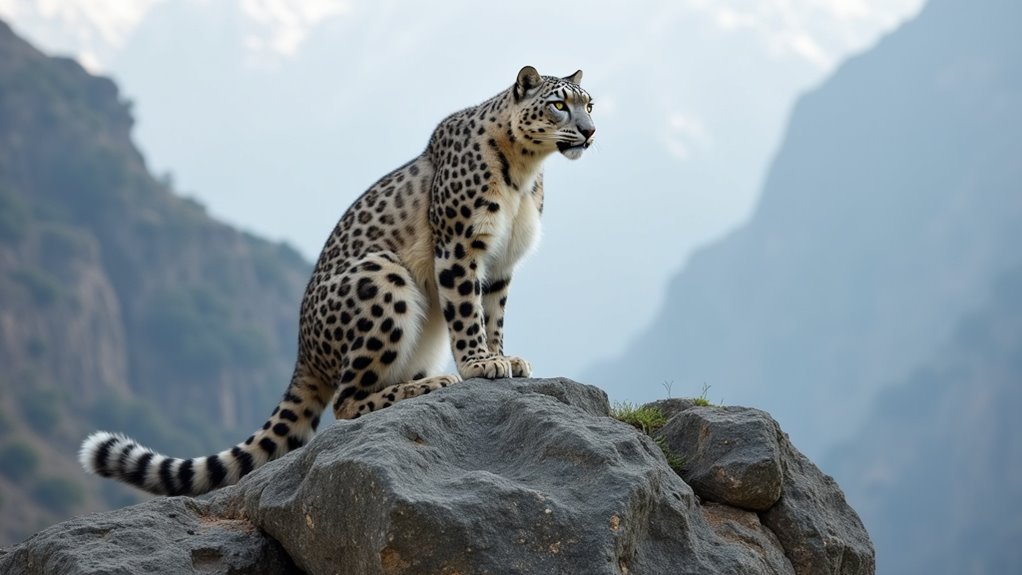
Stealthy and powerful, leopards remain one of Pakistan’s most formidable predators despite their declining numbers across the country. These solitary hunters once roamed widely through Punjab, Baluchistan, and Sindh, but habitat loss and human conflict have restricted their range.
Elusive masters of ambush, leopards haunt Pakistan’s shrinking wilderness with undiminished ferocity.
If you’re exploring Pakistan’s wilderness, be aware of leopard dangers:
The rare and elusive Un-Common Leopard can be found in the forests of Gallies and Murree Division in Northern Pakistan, adding to the country’s predator diversity.
Only 36% of suitable leopard habitat falls within protected areas, making human-wildlife conflict increasingly common.
Despite their small size, Deathstalker scorpions pack a potentially lethal punch with venom that ranks among the most dangerous in Pakistan’s eastern regions. These yellowish-brown arachnids primarily inhabit the Thar Desert, hiding under rocks or in burrows about 20cm deep.
You’ll recognize them by their distinctive tail structure containing the deadly venom gland. Their venom contains powerful neurotoxins like chlorotoxin that affect nerve and muscle function. They’re nocturnal ambush predators, emerging at night to hunt insects and spiders.
If you’re exploring desert areas in eastern Pakistan, wear protective footwear and never reach blindly under rocks. A sting requires immediate medical attention as their highly toxic venom can be fatal without prompt treatment.
These solitary creatures only interact with others during mating, when females later carry their young on their backs for protection.
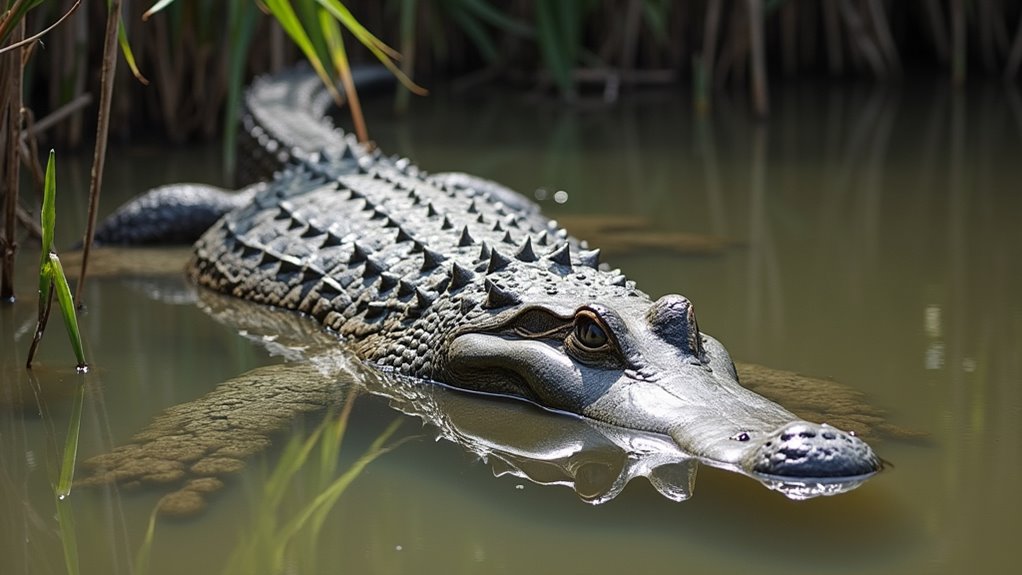
Contrary to popular belief, saltwater crocodiles aren’t actually native to Pakistan’s waterways. The reptiles often misidentified as “saltwater crocodiles” in Pakistan are actually mugger crocodiles, which inhabit some coastal regions but aren’t true saltwater species.
If you’re exploring Pakistan’s aquatic environments, here’s what you should know about crocodilian species:
Understanding this distinction is vital for wildlife education and conservation efforts in Pakistan, as protecting the correct native species is essential for ecological balance. Recent studies have shown that mugger crocodiles are frequently observed basking on surfaces rather than swimming in their habitats.
While not as numerous as they once were, wolves still roam the remote highlands of Pakistan, presenting a potential danger to unwary travelers and local communities. These social predators inhabit mountainous regions and deserts, from Balochistan to the northern territories of Chitral, Gilgit, and Baltistan.
Though diminished in numbers, wolves remain a threat in Pakistan’s highlands, from Balochistan to Chitral, Gilgit, and Baltistan.
You’ll want to exercise caution when trekking through Pakistan’s wilderness areas, especially at night when wolves are most active. They’re primarily pack hunters that target gazelle and livestock, which often brings them into conflict with humans.
During heavy snowfall periods, wolf attacks on livestock increase, making encounters more likely. The gray wolf population has dramatically decreased to approximately 200 wolves, with their range contracted by 80-90% throughout Pakistan.
Climate change and agricultural expansion have pushed wolves into increasingly remote areas, but approximately 23,129 km² of suitable habitat remains where you might encounter these resilient and potentially dangerous predators.
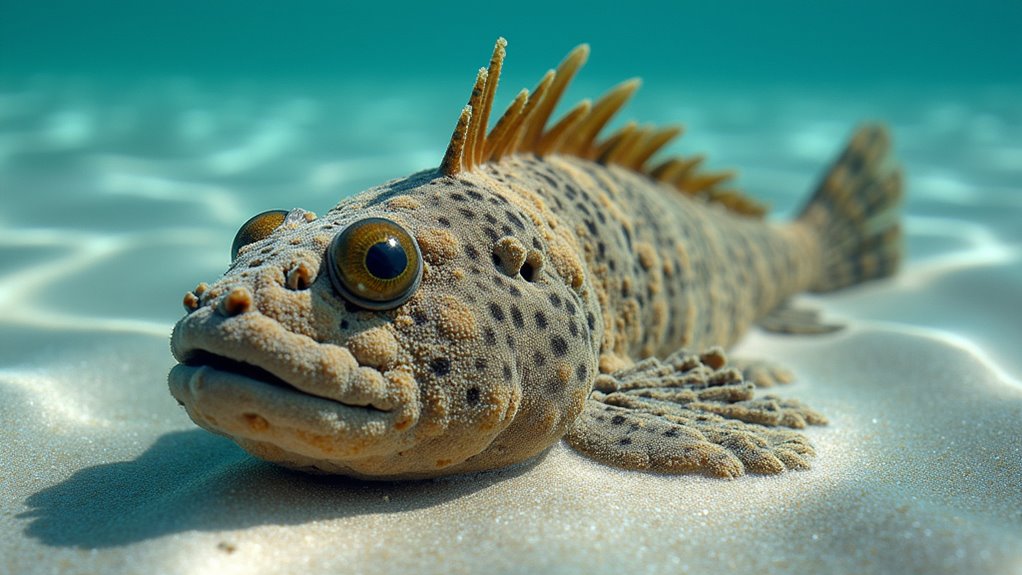
Lurking beneath Pakistan’s coastal waters, stonefish represent one of the most dangerous marine creatures you’ll ever encounter. These masters of disguise blend perfectly with their surroundings in the Indo-Pacific region, potentially including Pakistan’s coastline.
When exploring shallow coastal areas, be aware of these lethal threats:
The species Synanceia verrucosa is widely distributed throughout the Indian Ocean waters that touch Pakistan’s shores. If stung, seek medical attention immediately. The excruciating pain from their venom can lead to tissue necrosis, paralysis, or even death if left untreated.
Pakistan’s diverse landscapes harbor deadly creatures you’ve now learned to identify. When exploring, stay vigilant, wear proper gear, and keep your smartphone GPS handy to avoid these dangerous animals’ territories. Remember, most attacks occur when these creatures feel threatened. Respect their space, maintain distance, and you’ll return from your adventures with amazing photos instead of hospital bills. Knowledge is your best shield against nature’s deadliest inhabitants.